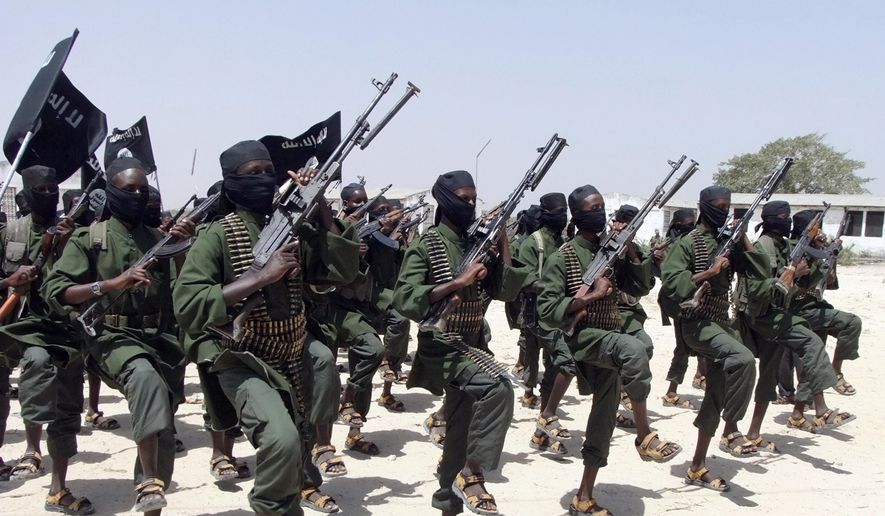A U.S. airstrike killed more than a dozen al-Shabab militants on Sunday in the latest military action targeting the al Qaeda-linked terror group that has been fighting for more than a decade to topple Somalia’s Western-backed government.
Authorities said 14 al-Shabab fighters were killed, according to a report Monday by Voice of America, which cited Somali military officials as saying the U.S. military conducted the strike to support Somali troops battling the terror group.
Somali troops were reportedly able to capture al-Shabab’s primary stronghold in the nation’s Hiran region and destroy local hideouts following the strike, which U.S. officials on Monday had not officially confirmed.
The Pentagon’s Africa Command said in a statement last week that American forces had launched three airstrikes on Aug. 9, targeting al-Shabab fighters who had attacked Somali National Army Forces. The statement said an initial assessment found four militants had been killed in the Aug. 9 strikes.
“U.S. forces are authorized to conduct strikes in defense of designated partner forces,” Africa Command officials said.
Somalia is situated in the Horn of Africa, but al-Shabab is believed to have designs on other countries in the region in order to advance its own rule based on a strict interpretation of Islamic law.
On Aug. 6, the group launched a rare cross-border attack into neighboring Ethiopia but was thwarted by security forces.
“With more than 800 killed and 100 captured, Al-Shabab’s misadventure into Ethiopia ended with a rout of the terrorists,” Mustafe M. Omer, president of the Somali region of Ethiopia, said on Twitter after the skirmish. “The task of ensuring [al-Shabab] never dares to get close to the border is underway.”
“A united people and functioning state can never be intimidated by ragtag outfits like Al-Shabab,” Mr. Omer wrote.
U.S. Africa Command officials, meanwhile, say “great measures” are taken to prevent civilian casualties from being caused by American strikes against the al-Shabab, which has been listed by the State Department as a “Foreign Terrorist Organization” since 2008.
The U.S. efforts “contrast with the indiscriminate attacks that Al-Shabab regularly conducts against the civilian population,” according to the Africa Command statement circulated last week.
“The Federal Government of Somalia and the U.S. remain committed to fighting Al-Shabab to prevent the deaths of innocent civilians,” the statement said. “Violent extremist organizations like Al-Shabab present long-term threats to Somali, regional, and U.S. interests.”
The recent U.S. airstrikes follow President Biden’s decision in May to deploy several hundred U.S. Special Forces to Somalia, escalating a long-term counterterrorism mission there that former President Donald Trump had sought to wind down.
The strikes also follow the election in May of Hassan Sheikh Mohamud as Somalia’s new president. He has pledged to continue the fight against al-Shabab’s influence in the country.
On Aug. 7, a senior Biden administration official said the White House recognizes that political inclusion and economic opportunity are crucial means to address violent extremism in the region. However, “we will still use military force in a calibrated and discreet way in certain crises and challenges that affect and threaten U.S. interests and the U.S. homeland,” the official said.
Sunday’s strikes came days after Marine Gen. Michael Langley assumed command of U.S. Africa Command. He is the first African American to be promoted to four-star general in the Marine Corps.
Daniel Furnad, associate director of the Nairobi-based Farsight Africa Group, said the timing of the airstrike might not be a mere coincidence. “U.S. policy has been undergoing an overhaul [and] with General Langley now in place, I think we are starting to see that policy unfold,” Mr. Furnad said, according to Voice of America.
• Mike Glenn can be reached at mglenn@washingtontimes.com.




Please read our comment policy before commenting.